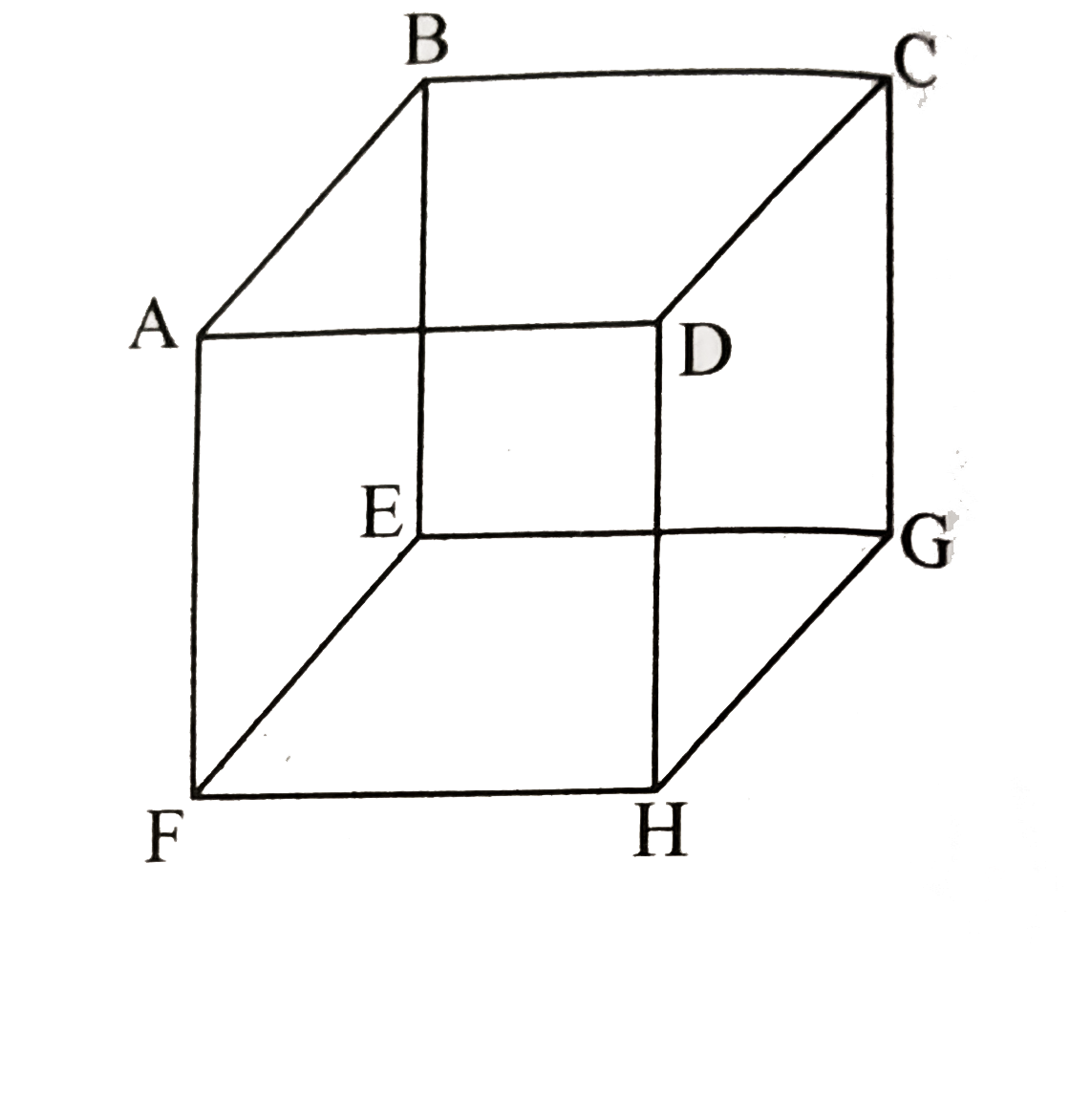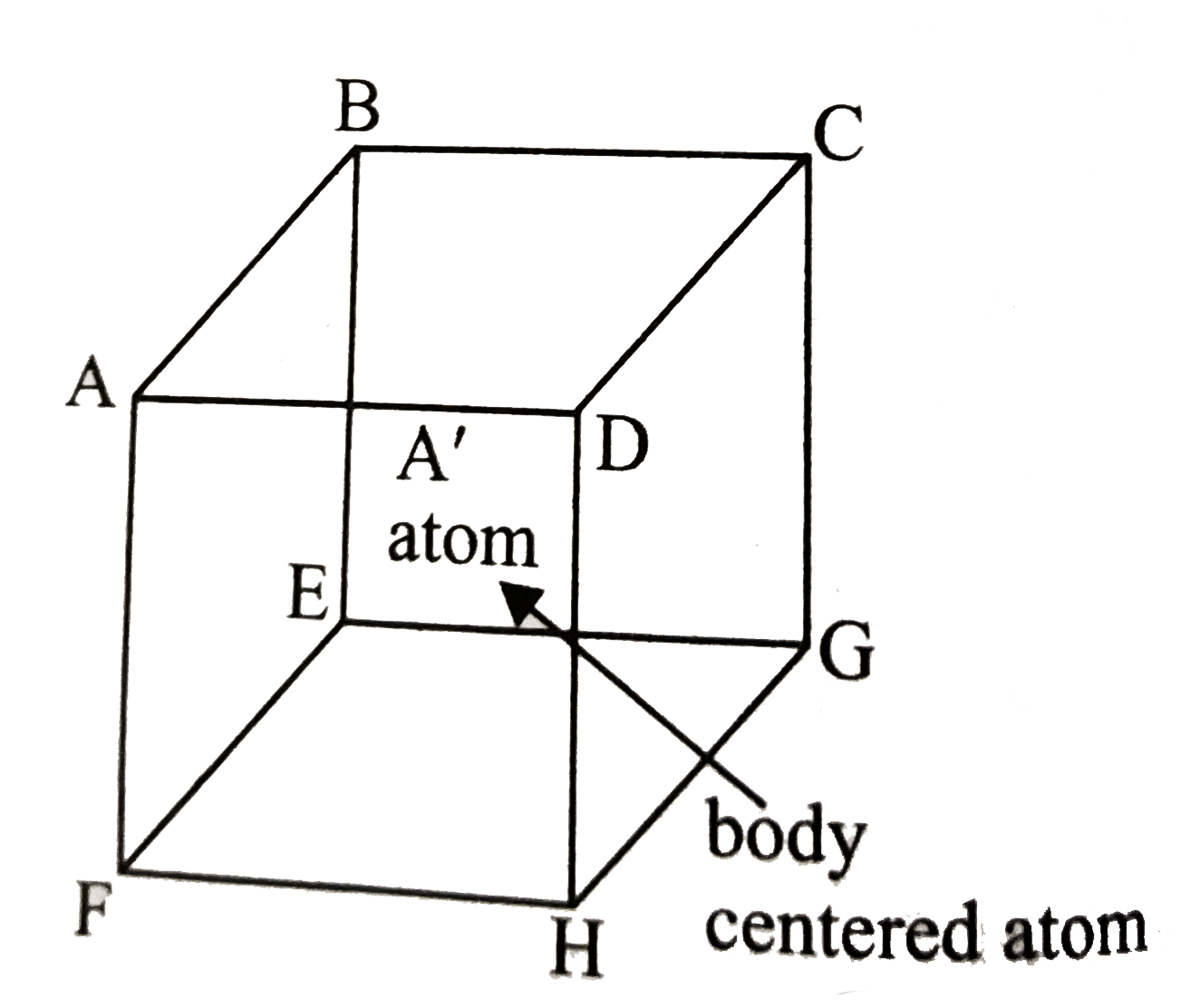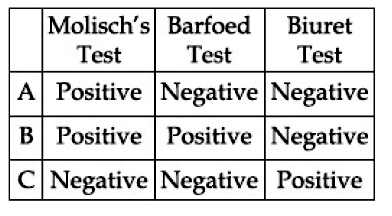In the cubic lattice given below, the three distances between the atoms A−B,A−C, and A−G are, respectively,

a,√2a,√3a
a,√3a,√2a
a2,a√2,√3a2
a,√3a2,√2a
The correct Answer is:A
i. Edge length =AB=AD=BC=CD=a
ii. AC =√(AB2)+(BC)2=√(a2)+a2=√2a
iii. AG =√(AC2)+(CG)2=√2a2+a2=√3a
Topper's Solved these Questions
- BOOK - CENGAGE CHEMISTRY ENGLISHCHAPTER - SOLID STATEEXERCISE - Exercises (Assertion-Reasoning)19videos
SOLID STATE
- BOOK - CENGAGE CHEMISTRY ENGLISHCHAPTER - SOLID STATEEXERCISE - Exercises (Interger)9videos
SOLID STATE
- BOOK - CENGAGE CHEMISTRY ENGLISHCHAPTER - SOLID STATEEXERCISE - Exercises (Multiple Correct)39videos
SOLID STATE
- BOOK - CENGAGE CHEMISTRY ENGLISHCHAPTER - REDUCTION AND OXIDATION REACTION OF ORGANIC COMPOUNDSEXERCISE - SUBJECTIVE TYPE4videos
REDUCTION AND OXIDATION REACTION OF ORGANIC COMPOUNDS
- BOOK - CENGAGE CHEMISTRY ENGLISHCHAPTER - SOLUTIONSEXERCISE - Ex 2.3 (Objective)9videos
SOLUTIONS
Similar Questions
In body-centred cubic lattice given below, the three disntances AB,AC, and ∀' are
 View Solution
View SolutionIn bcc structure of lattice constant a, the minimum distance between atoms is
View SolutionIn bcc structure of lattice constant a, the minimum distance between atoms is
View SolutionA, B and C are three biomolecules . The results of the tests performed on them are given below:

A, B and C are respectively :View SolutionA metal crystallize in a body centered cubic lattice (bcc) with the edge of the unit cell 5.2Å. The distance between the two nearest neighour is
View SolutionThe regular three dimensional arrangement of points in a crystal is known as crystal lattice and the smallest repeating pattern in the lattice is called unit cell. The unit cells are characterised by the edge lengths a, b, c and the angles between them α,βandγ respectively. Based on this, there are seven crystal systems. In a cubic unit cell:
a=b=candα=β=γ=90∘ The number of points in simple, body centred and face centred cubic cells are 1,2 and 4 respectively In both the hcp and ccp of spheres, the number of tetrahedral voids per sphere is two while the octahedral voids is one.
A double triangular void surrounded by three spheres above and three spheres below is calledView SolutionThe regular three dimensional arrangement of points in a crystal is known as crystal lattice and the smallest repeating pattern in the lattice is called unit cell. The unit cells are characterised by the edge lengths a, b, c and the angles between them α,βandγ respectively. Based on this, there are seven crystal systems. In a cubic unit cell:
a=b=candα=β=γ=90∘ The number of points in simple, body centred and face centred cubic cells are 1,2 and 4 respectively In both the hcp and ccp of spheres, the number of tetrahedral voids per sphere is two while the octahedral voids is one.
In a face centred cubic cell, an atom at the face contributes to the unit cellView SolutionAn element has a face-centred cubic (fcc) structure with a cell edge of a. The distance between the centres of two nearest tetrahedral voids in the lattice is:
View SolutionThe regular three dimensional arrangement of points in a crystal is known as crystal lattice and the smallest repeating pattern in the lattice is called unit cell. The unit cells are characterised by the edge lengths a, b, c and the angles between them α,βandγ respectively. Based on this, there are seven crystal systems. In a cubic unit cell:
a=b=candα=β=γ=90∘ The number of points in simple, body centred and face centred cubic cells are 1,2 and 4 respectively In both the hcp and ccp of spheres, the number of tetrahedral voids per sphere is two while the octahedral voids is one.
The C.N of cation occuppying an octahedral vois is:View SolutionAB crystallizes in a body centred cubic lattice with edge length a equal to 387pm .The distance between two oppositely charged ions in the lattice is :
View Solution

